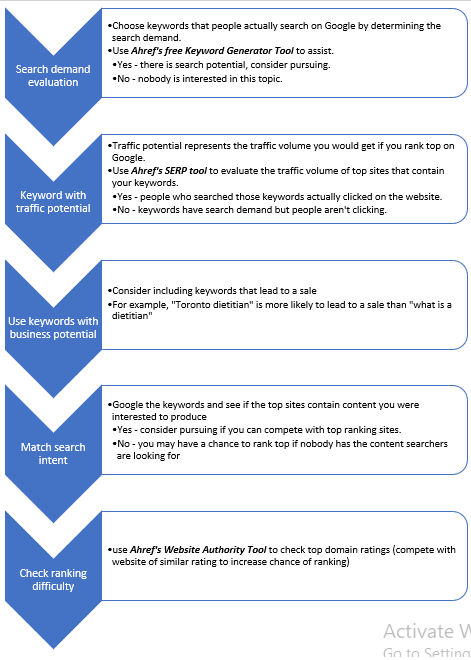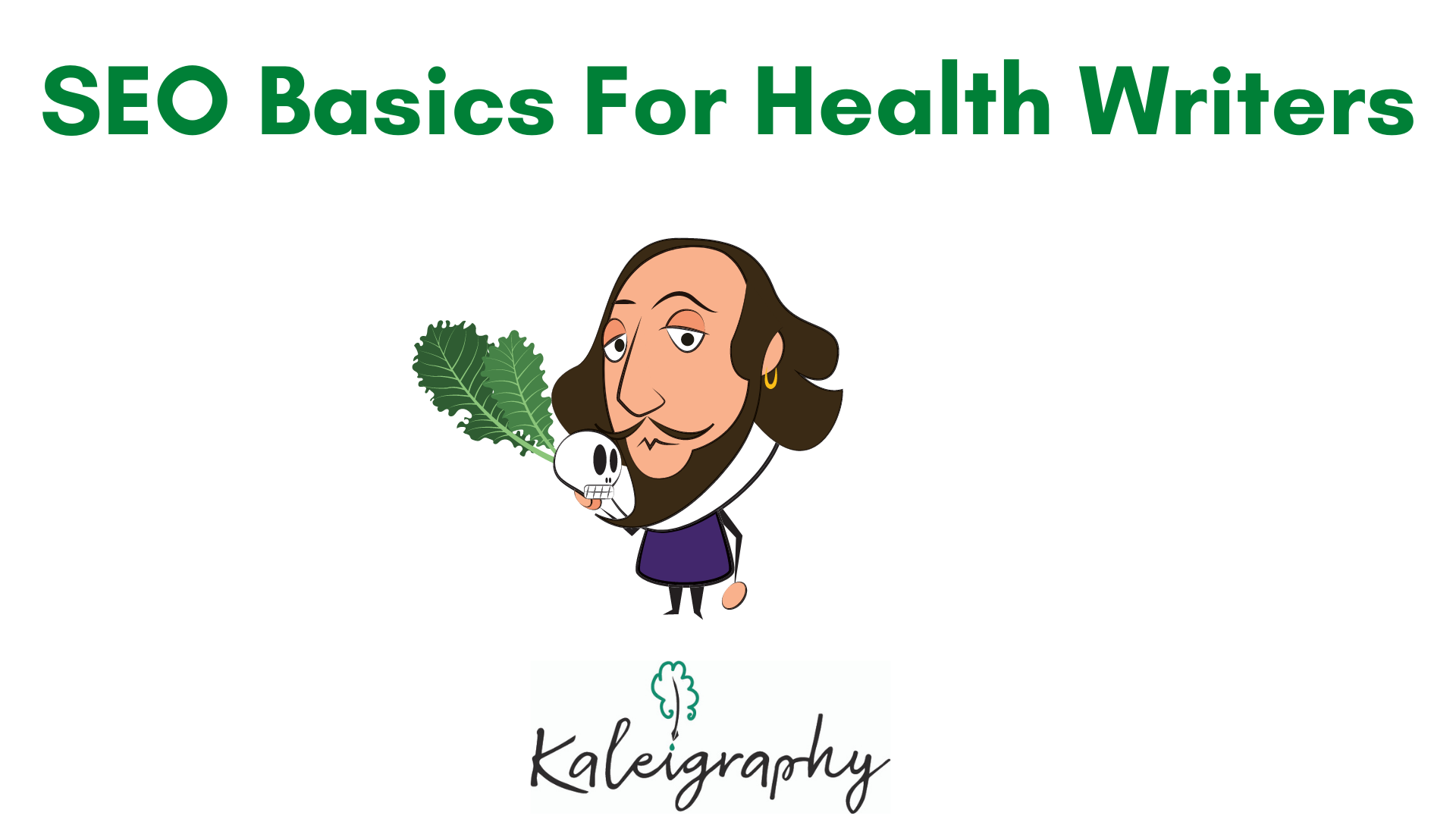A special thank you to Evan Huang Ku RD for preparing this resource which I’m confident will help any new and aspiring writers out there.
If you are looking to take your writing to the next level, I can help – reach out to chat about Kaleigraphy.
Step 1 – Keyword Research
When developing website content (i.e., a blog post), check to see if the content has search potential that will lead to traffic or a transaction. Then, follow the following steps to help you evaluate keywords and decide whether to pursue writing on these keywords.

Step 2 – Helpful Tools
Below are free tools referenced in the above keyword flowchart.
Step 3 – Keyword Modifiers
Depending on the type of content you want to generate, try to include keyword modifiers, i.e., words below in the table, in keyword research. For example, if you are writing a post to compare various granola bars, research the keywords “granola bars, review” following the flowchart above.
| Informational | Navigational | Commercial investigation | Transactional |
| How
What Who Where Why Guide Tutorial Resource Help Ideas Tips Learn Examples |
Brand names
Name of a product Name of a service |
Best
Top Pricing Review Attribute of a product Comparison Vs |
Buy
Coupon Order [city] dietitian Purchase Cheap Price Pricing |
Step 4 – Popular Blog Formats
Consider the follow types of blog post that are popular on Google:
- How to guides
- Step by step tutorials
- List posts
- Opinion editorials
Step 5 – On Page SEO
On page SEO is the practice of optimizing web pages to rank higher in search engines. The page’s goal should satisfy the search intent, i.e., provide things that searchers intend to see.
Technical aspects:
- Adding keywords to the title when it makes sense
- Use short Url slugs (i.e., use keywords where space is replaced with hyphen_)
- Use meta descriptions to influence click rates.
- Add internal links to and from pages
- It helps Google understand what the page is about when you add internal links
- Optimize image (get traffic from Google Image searches)
- Name image file appropriately
- Use descriptive alt text (HTML attribute that goes into the image tag). Alt-text is a little more descriptive than file image
- Compress pixel to increase speed
- Write in short sentences and short paragraphs (the Hemingway app checks the grade level)



